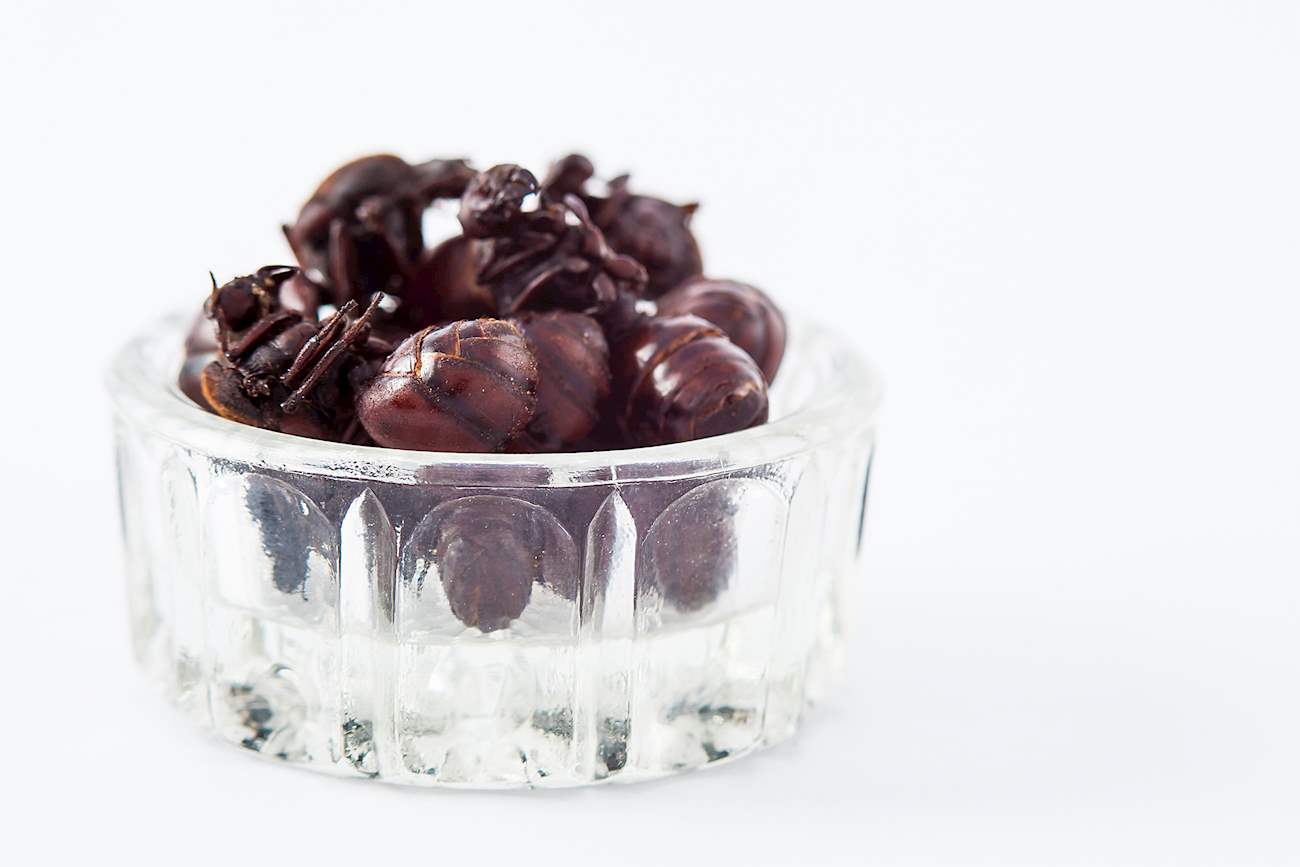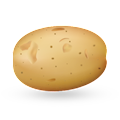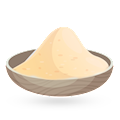MAIN INGREDIENTS
Chapalele is a Chilean bread made with only two main ingredients – potatoes and flour. It originates from the Chiloé Island, where it is traditionally steamed and cooked in curanto – a hole in the ground used for preparing food.
However, it can also be fried, pan-fried, or baked. When it's done, chapalele can be consumed on its own as a snack or it can be used as an accompaniment to stews and meat dishes.
MAIN INGREDIENTS
Hormiga culona are world famous fat-bottomed ants, an unusual delicacy from the department of Santander in Colombia. Originally harvested by the Guane Indians as a protein source, today it takes about five hours to gather the ants from their nests in springtime.
Their bottoms get soaked in salted water, then they are fried for about 45 minutes and strained, while the wings get removed by hand. The snack is sold on numerous street corners, made with the addition of wine, or toasted with salt, while some upscale restaurants make their own gourmet versions of the dish.
MAIN INGREDIENTS
Pé-de-moleque is a traditional candy made from peanuts and rapadura — unrefined cane sugar. The process of preparing it is quite simple – peanuts are incorporated into melted sugar, and the entire mixture is poured on a flat surface.
Once it’s cooled, it is broken into smaller, irregular pieces of candy. Additional ingredients include butter, milk, and peanut oil which are all optional, but even the peanuts can be substituted with various nuts. There is no one uniform recipe as these candies can differ in color (from light to dark), in the type of ingredients used, and in their texture (soft to hard).
Although empanadas are traditionally associated with savory fillings, in the case of empanada de manzana the filling is a sweet combination of cinnamon-spiced apples. Sliced, preferably tart apples are wrapped inside the buttery dough, shaped in small crescent forms and baked until golden and crispy.
Whether they are served as a dessert, a filling sweet breakfast, or a light afternoon snack, empanadas de manzana are a signature treat of the Chiloé Island and can occasionally be found in traditional Mexican cuisine.
Mandoca is a Venezuelan dish originating from the region of Zulia. These elongated rings are made with a combination of cornmeal, plantains, panela sugar, water, and queso fresco. Once prepared, the dough is fried in hot oil until golden-brown.
Mandocas are traditionally served hot for breakfast, accompanied by cheese, butter, and coffee on the side.
MAIN INGREDIENTS
Biscoito de polvilho is a traditional, starchy, salted cookie from Brazil. The cookies are characterized by their round, puffy shape and a crispy exterior. The word from its name, polvilho, is derived from the Latin word pulvis and the Spanish polvillo, meaning fine powder, referring to the sour cassava starch, a key ingredient used in the preparation of these snacks.
Biscoito de polvilho can be traced back to the 18th century, when it was prepared on farms in the state of Minas Gerais and served to the plantation owners along with cheese and coffee as an afternoon snack. Due to their unique flavor and airy texture, the cookies are so popular in Brazil that they can even be found at most supermarkets, or bought from numerous beach food vendors.
One of the most omnipresent local dishes in the Paisa region of Colombia is the traditional arepa paisa, made from soaked threshed corn that is shaped and grilled until golden brown. This crispy and luscious corn cake can be eaten on its own, served as a side dish, or stuffed with variable fillings such as cheese, meat, or eggs - you can eat it with whatever choice of filling you want.
The versatility of the arepa paisa is only matched by the love the locals have for it - a typical breakfast in this region is centered on it (topped with butter, salt, and slices of cheese), and sometimes the dish is part of all meals of the day! And because you can find arepa paisa at every supermarket, street vendor or restaurant, there's always a perfect one available at all times.
MAIN INGREDIENTS
Arepa Santandereana is a Colombian arepa variety from the El Santander department. These arepas are made with yellow corn masa, cassava, and crispy pork belly – also known as chicharrón. They are usually grilled, and it is recommended to consume them while fresh and hot.
Arepa Santandereana is traditionally eaten as a snack, but it can also be served as an accompaniment to traditional Colombian dishes.
MAIN INGREDIENTS
Pan de huevo is a Chilean egg bread roll that is typically consumed as a snack at local beaches, where it’s traditionally sold by women wearing all-white uniforms. The bread roll is made with a combination of flour, baking powder, sugar, eggs, vanilla, and butter.
It is recommended to consume pan de huevo with butter. Interestingly, pan de huevo hardens quickly, so it should be eaten as soon as possible after it has been baked.
MAIN INGREDIENTS
Chipa so'o is a savory cake that is popular in Paraguay and Argentina. The dough is prepared with a combination of pork fat, corn flour, corn starch, milk, salt, and cheese. Once prepared, the dough is shaped into balls and filled with a mixture of eggs and ground or finely chopped meat.
Before baking, chipa so'o is brushed with milk in order to develop a nice color on the exterior. This chipa variety is consumed as a hearty snack, but it can also make for a calorie-laden lunch.
TasteAtlas food rankings are based on the ratings of the TasteAtlas audience, with a series of mechanisms that recognize real users and that ignore bot, nationalist or local patriotic ratings, and give additional value to the ratings of users that the system recognizes as knowledgeable. For the “18 Worst Rated South American Snacks” list until March 26, 2025, 6,435 ratings were recorded, of which 3,471 were recognized by the system as legitimate. TasteAtlas Rankings should not be seen as the final global conclusion about food. Their purpose is to promote excellent local foods, instill pride in traditional dishes, and arouse curiosity about dishes you haven’t tried.



















